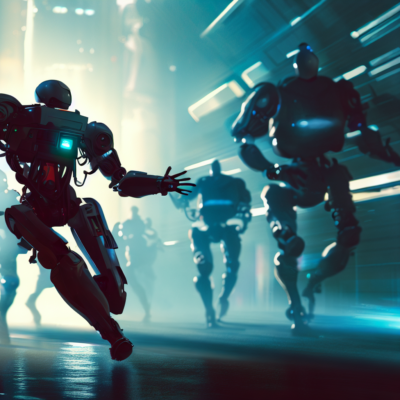Hello everyone, on this page you will learn about Generative Ai and how exactly it relates to the business world around us. You will also learn about the practical applications of Generative AI across various business sectors, the benefits it can bring to your business, potential challenges in its implementation, and how your organization can prepare to leverage this innovative technology.
What is Generative AI?
Generative AI is a subfield of artificial intelligence that leverages machine learning models to create new data from existing ones. Essentially, these models are designed to understand and learn the underlying patterns from input data, and then generate similar, but ‘new’, data.
Consider, for example, an AI trained on a database of classical music. Once the AI understands the patterns and structures of the music it has been trained on, it could then create its own piece of music that echoes the style and complexity of the classics yet is an original composition. In a similar way, a Generative AI model trained on text data can generate human-like text that’s contextually relevant and coherent.
While the most common types of Generative AI are probably Generative Adversarial Networks (GANs) and Variational Autoencoders (VAEs), you might have heard of models such as GPT (Generative Pre-training Transformer) by OpenAI, which can generate surprisingly human-like text. Another famous example is DALL-E by OpenAI, which generates images from textual descriptions.
Generative AI is a rapidly evolving field with significant potential. From creating original art, music, and design, to drafting emails or articles, to simulating virtual environments, the possibilities are seemingly endless. This technology opens up new horizons for automation, creativity, and efficiency, and is becoming an increasingly important tool for businesses.
Examples of Generative AI
- Text Generation: Tools like GPT-4 by OpenAI can generate human-like text. This can be used in writing articles, code/programming, creating poetry, drafting emails, and more.
- Image Generation: DALL-E by OpenAI can generate unique images from textual descriptions, which can be useful in design and creative professions.
- Music Composition: OpenAI’s MuseNet is an AI that can generate 4-minute musical compositions with 10 different instruments, and can combine styles from country to Mozart.
- Voice Generation: Google’s Tacotron can generate human-like speech, mimicking various accents and tones.
- Chatbots: Generative AI is used in creating responses for chatbots, making them sound more human and improving the quality of interactions.
- Fashion Design: Generative AI can be used to create new fashion designs by learning styles, patterns and colors from existing designs.
- Game Design: Generative AI can be used to create new levels or elements in video games, providing a unique experience for each player.
- Medicine Discovery: Generative AI can assist in drug discovery by generating new potential chemical compounds.
- Movie Script Writing: AI can generate scripts or dialogues for movies by learning from previous scripts.
- Deepfake Creation: Generative Adversarial Networks (GANs) can generate realistic images and videos, commonly known as ‘deepfakes’, by learning from real images and videos. While this has creative applications, it also raises ethical considerations.
How Generative AI can Benefit Your Business
Generative AI holds profound significance for corporate executives and management, with numerous businesses having already rolled out initiatives involving this innovative technology. In certain instances, companies are crafting unique applications of generative AI models by optimizing them with their own exclusive data.
The advantages businesses can harness through the use of generative AI encompass:
- Boosting workforce efficiency
- Tailoring customer interactions to individual needs
- Speeding up Research & Development via generative design
- Cultivating novel business models

Can Generative AI Cause Problems For Businesses?
- Copyright infringement: Generative AI models can be used to create content that infringes on copyright, such as images, text, or music. This could lead to legal action against businesses that use generative AI in this way.
- Data privacy: Generative AI models can be used to generate content that includes personal data, such as names, addresses, or phone numbers. This could lead to data privacy violations, such as the accidental release of sensitive data.
- Misinformation: Generative AI models can be used to generate content that is false or misleading. This could lead to the spread of misinformation, which could damage a business’s reputation.
- Financial losses: Generative AI models can be used to create counterfeit products or services. This could lead to financial losses for businesses that are legitimate producers of these products or services.
- Job displacement: Generative AI models can be used to automate tasks that are currently performed by humans. This could lead to job displacement, as businesses no longer need to hire as many people to perform these tasks.

Future of Generative AI
The future of Generative AI is beyond critical, as in, it is here to stay and it is quickly going to be integrated into almost every aspect of future businesses this is because like I just listed above, it’s uses and most importantly, it’s ability to adapt is something that will keep AI tied together with business from this point forward. I strongly believe that.
The artificial intelligence (AI) market, currently valued at close to 100 billion U.S. dollars, is projected to experience a twentyfold increase by 2030, reaching an estimated worth of nearly 2 trillion U.S. dollars.
- You can also check out our list of the best ai tools for black entrepreneurs.
Discover more from Black Business Data
Subscribe to get the latest posts sent to your email.









